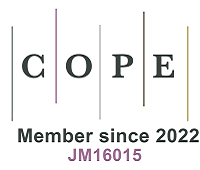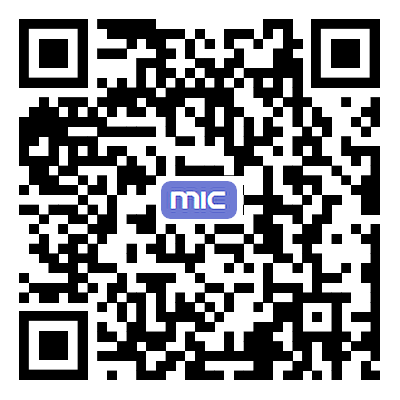Topological transformation of magnetic hopfion in confined geometries
Abstract
Three-dimensional (3D) topological magnetic structures have attracted enormous interest due to their exceptional spatial structures and intriguing physics. Hopfions, characterized by the Hopf index, are 3D spin textures that emerged as closed twisted skyrmion strings. A comprehensive understanding of magnetic structural transitions within nanostructures is crucial for their applications in spintronics devices. Despite the demonstration of stabilization and current-driven dynamics of hopfion, their behavior in geometric confinement has remained unexplored. Here, we investigate the transformation between hopfions and torons in various nanostructures using micromagnetic simulations. By tailoring the axial ratio of elliptical nanodisks, the elliptical hopfion is found to be transformed into a toron structure. Moreover, the current-driven topological transformation between hopfion and toron has also been realized in finite-sized nanostripes and stepped nanostructures. This deformation and transformation arise from the repulsive potential of the boundaries or edges. To connect real-space observations and 3D topological spin configurations, we simulate the Lorentz transmission electron microscope images of the aforementioned magnetic structures. This study, uncovering the dynamics and transformation of hopfions, will invigorate 3D magnetic structures-based memory and logic devices.
Keywords
INTRODUCTION
Topological solitons are particle-like objects initially described in effective nonlinear field theories and later introduced to condensed matter systems[1,2]. The continuous winding number of the two-dimensional (2D) solitonic vector field is characterized by a topological charge that classifies various configurations, including skyrmions[3-5], merons[6-8], and skyrmioniums[9,10]. These field configurations have been extensively studied in magnetic materials and promise applications in spintronics. Recent attention has been paid to three-dimensional (3D) topological spin solitons[11-13], among which skyrmion strings[12,14], magnetic bobbers[13,15], skyrmion bundles[16], and emergent magnetic monopoles[17] exhibit intriguing physical properties and nontrivial dynamic responses. Hopfions are 3D topological solitons that emerge when skyrmion strings twist into a torus with distinct knots[18]. Each cross-section of the skyrmion string exhibits the skyrmion structure. By twisting one end of the string through a complete revolution, bending the string, and connecting the two ends to form a circular closed loop, the hopfion structure is formed[19,20]. There are diverse hopfion structures corresponding to different rings, knots, and links that can be classified by the linking number of field lines known as the Hopf index[21,22]. Hopfions have been found in various physical systems, such as fluids[23,24], liquid crystals[25], and optical mediums[26]. In liquid crystals, the transformation between hopfions with different geometric structures has been demonstrated by applying electric fields[27]. Moreover, the inter-transformation of hopfions and torons can be achieved using laser tweezers[28].
Recently, several works revealed hopfions stabilized in noncentrosymmetric magnetic solids with Dzyaloshinskii-Moriya interactions (DMI)[21,29,30] or frustrated magnets with high-order exchange interactions[31]. The experimental study has verified the stabilization of hopfions in Ir/Co/Pt multilayers using X-ray imaging methods[32]. More recently, a deformed skyrmionium with a noninteger Hopf index, also called fractional hopfion, has been observed in a chiral magnetic FeGe through Lorentz transmission electron microscopy (LTEM) techniques[33]. Similar to the clarifications of skyrmions, hopfions are identified with two types, that is, the Bloch-type and Néel-type hopfions. The formation of Bloch-type hopfions is facilitated by bulk DMI, which arises from the broken crystal inversion symmetry[30]. On the other hand, Néel-type hopfions can be formed in the presence of interfacial DMI with broken interface symmetry[32]. Notably, interfacial perpendicular magnetic anisotropy (PMA) is essential in stabilizing both types of hopfions[22]. Besides, the 3D twisted and knotted configurations of hopfions exhibit intriguing properties in their current-driven dynamics[22,31] and resonant modes[34]. Hopfions have a non-zero Hopf charge and exhibit rotational symmetry, while skyrmioniums have zero skyrmion number and lack rotational symmetry[35]. Hopfions are generally more stable due to their higher symmetry and exhibit unique 3D motion free from the boundary constraints, such as translational motion, rotation, and dilation[31]. When subjected to magnetic fields, hopfions transform into torons accompanied by a change in excitation modes[34]. They possess a vanishing gyrovector in a racetrack, making them superior to skyrmions as information carriers because they do not exhibit undesirable skyrmion Hall effects[22]. However, the impact of geometric confinement and boundaries on the behavior of hopfions is often overlooked despite their crucial role in stabilizing hopfions and designing hopfion-based electronic devices.
In this article, we present a numerical investigation of the Bloch-type hopfion in a chiral magnet sandwiched between two layers with high PMA. We explore the statics of hopfions in confined nanodisks with varied shapes and the current-driven dynamics in finite-size rectangular nanostripes with designed nanostructures. Remarkably, the hopfions are found to transform into toron structures due to the repulsive potential from the edge. Furthermore, the LTEM images of versatile configurations are simulated to guide their experimental research. Our work paves the road to hopfion-based memory and logic spintronic devices.
MATERIALS AND METHODS
Micromagnetic simulations
Micromagnetic simulations were performed using the MUMAX3 software package[36], which is widely adopted for simulating various 3D topological magnetic structures. It is a GPU-accelerated operation and can significantly enhance the computational speed, particularly beneficial for handling larger volumes of data. We sandwiched the chiral magnet with a thickness of 78 nm by two 6 nm-thick layers with strong PMA (Ks = 1 MJ/m2). The initial state was computed from an ansatz[22]. The materials parameters of the chiral magnet layer were taken from FeGe[15,37], Ms = 384 kA/m, A = 4 pJ/m, and D = 0.718 mJ/m2. The bulk PMA Kb is from 0 to 60 kJ/m3, and the perpendicular magnetic field Hz is from 0 to 0.44 T. The meshed cell size is 3 nm × 3 nm × 2 nm. For the current-driven dynamics, the spin dynamics of hopfion were simulated based on the LLG equation containing the spin-transfer torque (STT) term:
where γ is the gyromagnetic ratio, Heff is the effective field. The second term denotes the Gilbert damping contribution where α is fixed at 0.05. The last two terms describe the coupling between spin and spin-polarized current according to the Zhang-Li STT model. β is the degree of non-adiabaticity.
LTEM simulations
The LTEM images were calculated by using PyLorentz[39], a software tool designed for mapping magnetic structures. The magnetic phase shifts (φ) based on the 3D spin textures were calculated by using the linear superposition method, which directly relates to the magnetization in Fourier space as
where k represents the position in Fourier space,
RESULTS AND DISCUSSION
3D structures of hopfion and toron
Magnetic hopfions can be formed in a system consisting of a chiral magnet or asymmetric multilayers with one moderate PMA layer sandwiched by two magnetic layers with strong PMA. The free energy terms of this system are given by
where A is the Heisenberg exchange constant, ωD is the DMI energy density depending on the symmetry of the system. We consider a chiral magnet with bulk DMI, where ωD = Dm·[∇ × m]. Kb and Ks are bulk and the interfacial PMA constants, respectively. Hz is the magnetic field applied along the z-axis, Ms is the saturated magnetization and εd is the demagnetization energy density. First, we conduct simulations in a square geometry comprising a chiral magnet layer sandwiched by two layers with strong PMA. Consequently, a Bloch-type hopfion is permitted in the absence of an external magnetic field. Figure 1A shows the hopfion preimages of spins with zero perpendicular component (sz), which represents the iso-surface configurations with zero sz. The inset of Figure 1A shows the multiple cross-sectional spin texture images in the xy plane at different heights for the hopfion. The magnetization at the top and bottom surfaces is oriented upwards, which is due to the strong PMA in the outer layers. In the vicinity of the upper or lower layers, the hopfion exhibits a toroidal vortex structure with the central spins oriented upwards. The cross-sectional spin texture at the intermediate layers exhibits a Bloch-type skyrmionium[40]. Unlike a skyrmion with a topological charge of one, a skyrmionium is a skyrmion surrounded by an annular domain wall with an opposite topological charge, resulting in a total topological charge of zero. When an external magnetic field Hz is applied, the core spins of the hopfion gradually contract, resulting in the transformation from hopfion into a toron state. Meanwhile, the midplane magnetization profile changes from the skyrmionium to a skyrmion. Figure 1B shows the preimages of a toron with zero sz at Hz = 0.2 T. As shown in the inset of Figure 1B, the toron consists of skyrmion layers aligning across much of the xy plane with a monopole-antimonopole pair located at its upper and lower ends[41]. In addition, the xz midplane cross-sectional spin texture of the hopfion [Figure 1C] is a skyrmion-antiskyrmion pair.
Figure 1. 3D topological spin textures of hopfions and torons. The set of preimages with sz = 0 for hopfions at 0 T (A) and toron at
The topological invariant of hopfions in real space, known as the Hopf index[22], can be expressed as
where
Hopfions in nanodisks with various outer boundary shapes
To gain more insight into how boundary geometry influences the topological transformation of the 3D magnetic structure, we analyze the spin configurations at zero fields in confined systems with various outer boundary shapes. The formation of hopfion stems from the competition terms in Eq. 3, where demagnetization energy is largely impacted by the confined geometric shape. When a hopfion is confined within a square geometry, it adopts a square shape [Figure 1A], while it turns into a circular shape in a circular nanodisk [Figure 2A]. Although the morphology of hopfions is altered by the shape of the geometric constraint, their topology remains unchanged with a linking number of knots that equals 1, which is consistent with a previous study[29]. In order to facilitate experimental observation of hopfions, we simulate LTEM images that highlight their in-plane spin component. Their simulated phase-shift and under-focused LTEM images viewed along the z-axis in circular nanodisk are shown in Figure 2B and C, respectively. The LTEM images of a hopfion at different focus setting is shown in Supplementary Figure 1. Figure 2D shows the reconstruction of the magnetic component distribution of hopfions by solving the transport-of-intensity equation (TIE) via focal series, in line with the in-plane spin distribution depicted in Figure 2A. An under-focus image displays a ring-like pattern with a bright circular hola surrounding a dark spot, which is distinct from the LTEM contrasts of skyrmion tubes or bobbers, which only show a bright spot[15]. However, the ring pattern observed in an under-focused hopfion image may resemble that of a skyrmionium tube with a ring pattern, and the comparison of phase intensity between the two textures is addressed in Supplementary Figure 2[43].
Figure 2. Hopfion under geometric constriction. (A) Mid-plane cross-sections of hopfions in circular nanodisk with d = 150 nm. (B) Simulated phase-shift image and (C) under-focused LTEM image of hopfion shown in (A) for viewing directions along the z-axis. (D)
Recently, several studies have delved into the existence and stability of elliptical skyrmions, which showcase exceptional dynamics and resonance modes through the implementation of anisotropic DMI and anisotropic magnetic anisotropy[44-46]. Here, we find that the elliptical hopfion can be formed via geometric constraints. Figure 2E-H presents an overview of the relaxed magnetic configurations in elliptical nanodisks with varying axial ratios, where the long axis (LA) length is fixed at 150 nm and the short axis (SA) length varies at 130 nm [Figure 2E], 100 nm [Figure 2F], 90 nm [Figure 2G], and 70 nm [Figure 2H]. When the SA length is greater than 100 nm, the elliptical hopfion remains stable. However, as it decreases below 100 nm, the hopfion undergoes a gradual transformation into a toron state, which is attributed to the boundary effect. It should be noted that the demagnetizing fields play a crucial role in determining the stability of 3D textures with diverse geometric shapes, which is further demonstrated in Supplementary Figure 3. Figure 2I-L presents the simulated under-focused LTEM images in elliptical nanodisks corresponding to the magnetic configuration in Figure 2E-H. LTEM images with distinct contrast can reproduce hopfion transformation. The dark central spots in Figure 2I and J represent the core spin arrangement of hopfions, while the central shiny point in Figure 2K and L indicates the position of the Bloch points of the toron with a deeper magnetic length. Thus, careful observation of LTEM contrast can reveal detailed information about these topological textures. For the real-space observation of these topological textures, a promising system involves combining chiral magnets with magnetic multilayers. Specifically, multilayer systems, such as Ta/CoFeB/MgO[47], Pt/Co/Ta[48], and Pt/Co/Ir[32], allow for tunable PMA by adjusting the ferromagnetic layer thickness and stack configuration. The fabrication of heterostructures by incorporating chiral magnets such as FeGe[49], Co9Zn9Mn2[50], and Cu3OSeO3[13] sandwiched between multilayers possessing high PMA holds great promise for this purpose.
Current-driven motion of hopfion in a nonostripe
In comparison with the nanodisk, understanding hopfion behavior and stability within a nanostripe contributes to their application in racetrack memory. Figure 3 illustrates typical metastable states in a finite-size nanostripe with different values of Kb and Hz. A wide range of Kb (0-60 KJ/m3) and Hz (0.20-0.40 T) allows for the stabilization of hopfion, which indicates that the formation of the topological structure is not parameter-sensitive and appears to be widespread. Low Kb values result in an in-plane magnetic background, and small Hz values lead to the formation of stripe domains. This occurs because the enlarged hopfions reach the boundary and knots break. With an increase in Hz, the radius of a hopfion gradually shrinks, and it changes into a toron structure and eventually transitions to a ferromagnetic uniform state.
Figure 3. Phase diagram of different topological states with respect to PMA constant Kb and perpendicular magnetic field Hz. The metastable states are obtained by relaxing the magnetic nanostripe with an initial hopfion state at the center. The midplane (z = 50 nm) cross-sections of m are presented. The size of the nanostripe is 900 × 600 × 100 nm3.
According to the above results, the shape confinement effect in small-scale nanodisks enables the stable existence of hopfion at zero fields. In nanostripes or thin plates, hopfions exist as a metastable state and require an assistant magnetic field. Given the potential application of hopfions in racetrack memory, understanding their stability and current-induced dynamics within a nanostripe is crucial. Figure 4A shows the relaxed state at Kb = 40 kJ/m3 and Hz = 0.34 T, with the hopfion initially located at the left side of the nanostripe. The hopfion eventually stabilizes near the center of the nanostripe due to the repulsive force from the surrounding borders[51]. It was found that as the length of the nanostripe increases, the hopfion can also stabilize on the left side of the stripe. Detailed information regarding the relationship between the hopfion and its distance from the boundary as the length varied is available in Supplementary Figure 4. When applying a current with J = -8 × 1011 A·m-2 along the x direction, the hopfion first moves against the spin-polarized current direction for a short distance via STT. Subsequently, the hopfion slightly bounces back and eventually comes to a halt at a position approximately 300 nm away from the right boundary
Figure 4. Current-driven hopfion motion by STT in a nanostripe. (A-D) Current-driven motions of a hopfion at J = -10 × 1011 A·m-2 under a magnetic field of 0.34 T. The size of the simulated region is 900 × 600 × 100 nm3. The midplane (z = 50nm) cross-sections of m are shown. (E-H) Simulated under-focused LTEM images corresponding to structures in (A-D). (I) Trajectory of the spin texture driven by STT during a period of 16 ns. (J) The hopfion motion velocity along the x-axis vx and 2D topological number Ns as a function of time t. The vx and Ns are calculated based on spin textures in the midplane. (K) The demagnetizing energy density in the z = 50 nm plane at 0 ns.
The motion of hopfion can be qualitatively described within the framework of Thiele’s equation
The first term denotes the Magnus force, G = (0, 0, 4πNs) is the gyrovector, v is the velocity of the hopfion, and u is the STT-related electron driving velocity. The second term represents the dissipation force related to the tensor D defined as
Current-driven hopfion in artificially designed nanostructures
Finally, we study the current-driven dynamics of hopfions in artificially designed nanostructures, including a nanostripe with a single square notch, “H-like” shaped configurations, and stepped nanostructures. Figure 5A illustrates the motion of the hopfion in the nanostripe with a single-notch structure. The size of the notch is 60 nm × 150 nm and the hopfion trajectory is depicted by the black dashed line. Due to the extra repulsive force introduced by the notch, the hopfion stabilizes at the left side instead of the center of the nanostripe. When applying a current with J = -10 × 1011 A·m-2, the hopfion initially moves straightly along the +x direction and then shifts away from the notch. As the hopfion traverses the notch, it shifts back due to the diminished influence from the notch. The dynamical response of hopfion when approaching the boundary is similar to what is discussed in the case of the nanostripe. For the “H-like” nanostripe featuring two symmetrical notches of dimensions 150 nm × 150 nm, the hopfion moves almost entirely along the x direction with minimal deviation [Figure 5B]. This result is anticipated, given the canceled repulsive forces from the top and bottom notches. However, the hopfion experiences compression when traveling between the notches, leading to a reduction in its size. This indicates that introducing specific shapes of nanostructures can significantly alter the current-driven trajectory and size of the hopfions.
Figure 5. Current-driven dynamics of hopfions in designed nanostructures. Trajectory of hopfions in (A) nanostripe with a single notch. (B) “H-like” shaped nanostructures at J = -10 × 1011 A·m-2. (C) Current-driven transition from hopfion to toron in a stepped geometry at
Taking inspiration from previous work on the transformation between a skyrmion tube and bobber in a stepped nanostructure[37], we investigate the current-driven dynamics of hopfion in a nanostripe containing a vertical step, where a topological transformation potentially takes place. Figure 5C schematically shows the motion of the hopfion in a stepped geometry, and the cross-sectional spin textures in the xz plane are shown in Figure 5D-F, depicting the transformation from hopfion to toron in the stepped nanostructure. As the hopfion approaches the step edge, the potential barrier induces the hopfion to distort [Figure 5E], and finally, a toron forms in the thicker region [Figure 5F]. Unlike the toron state that occurs after a topological transition near the boundary or notch, each topological state in the stepped nanostructure can be easily generated and is capable of traveling long distances.
Studying the interaction between 3D topological spin textures and the sample geometry presents an effective strategy for addressing their stability and tunability[53,54]. Additionally, topological transformations hold immense potential for spintronic applications and could lead to the emergence of novel practical uses based on diverse 3D topological structures. The polarity of vortices[55] , topological charge[56], and other topological quantities[57] are found to be altered by various external stimuli, including magnetic field pulses, in-plane magnetic fields, and thermal energy. In comparison to the topological phase transitions induced by the aforementioned methods, the transitions of 3D topological spin textures caused by geometric shapes and currents discovered in this study make it easier to integrate them into spintronic devices, which can then be used to control the size and motion trajectory of topological spin textures. The reliable transformation from hopfion to toron makes the 3D topological magnetic structures act as reliable information carriers that can be applied to (i) hopfion racetrack memory enabling binary bit states[37]; (ii) magnetic memories for temporal computing[58]; and (iii) artificial synapses and neurons[59]. However, the nucleation of hopfions within nanostripes or nanoflakes remains challenging in experiments. For the formation of hopfion, two potential methods could be considered: Injecting an annular spin polarized current to reverse the local magnetization and facilitate hopfion creation; Applying positive and negative magnetic fields to induce hopfion formation. Moreover, for practical applications in devices, the hopfion-hopfion interaction and their interaction with defects should be further investigated.
CONCLUSIONS
In summary, this work provides a simulated exploration of the Bloch-type hopfion in chiral magnets, including its stability, current-driven behavior, and topological transformation in confined systems of finite size. Various approaches for inducing the topological transformation have been demonstrated, including the application of magnetic fields, confinement of shapes, and the employment of currents in combination with boundary or artificial edge potentials. Computer-simulated LTEM images of spin configurations are also included to assist in guiding experimental research in magnetic solids. Our findings significantly enhance the comprehension of the behavior exhibited by these fascinating 3D topological magnetic structures.
DECLARATIONS
Acknowledgments
The authors thank Xiaoguang Li and Daowei Wang for the helpful discussions.
Authors’ contributions
Conceived and designed the study: Zhou Y, Wang S
Performed data analysis and wrote the main draft of the paper: Gao Y, Li S, Zhu Z, Cao L
Provided technical support: Zhao Y, Xu J
All authors discussed the results and commented on the manuscript.
Availability of data and materials
Not applicable.
Financial support and sponsorship
This work was supported by the National Natural Science Foundation of China (Grant No. 11974298, No. 12374123, No. 52130103, No. 51971026, No. 52301226, and No. 12004319), the Shenzhen Fundamental Research Fund (Grant No. JCYJ20210324120213037), the Shenzhen Peacock Group Plan (Grant No. KQTD20180413181702403), the Guangdong Basic and Applied Basic Research Foundation (2021B1515120047), the National Key Research and Development Program of China (MOST) (Grant No. 2022YFA1402602), and the China Postdoctoral Science Foundation (Grant No. 2022M720183 and No. 2022M712295).
Conflicts of interest
All authors declared that there are no conflicts of interest.
Ethical approval and consent to participate
Not applicable.
Consent for publication
Not applicable.
Copyright
© The Author(s) 2024.
Supplementary Materials
REFERENCES
2. Battye RA, Sutcliffe PM. Knots as stable soliton solutions in a three-dimensional classical field theory. Phys Rev Lett 1998;81:4798.
4. Tonomura A, Yu XZ, Yanagisawa K, et al. Real-space observation of skyrmion lattice in helimagnet MnSi thin samples. Nano Lett 2012;12:1673-7.
5. Zhou Y. Magnetic skyrmions: intriguing physics and new spintronic device concepts. Natl Sci Rev 2019;6:210-2.
6. Li X, Shen L, Bai Y, et al. Bimeron clusters in chiral antiferromagnets. NPJ Comput Mater 2020;6:169.
7. Lin SZ, Saxena A, Batista CD. Skyrmion fractionalization and merons in chiral magnets with easy-plane anisotropy. Phys Rev B 2015;91:224407.
8. Gao Y, Yin QW, Wang Q, et al. Spontaneous (Anti)meron chains in the domain walls of van der Waals Ferromagnetic Fe5-xGeTe2. Adv Mater 2020;32:e2005228.
9. Kolesnikov AG, Stebliy ME, Samardak AS, Ognev AV. Skyrmionium - high velocity without the skyrmion Hall effect. Sci Rep 2018;8:16966.
10. Göbel B, Schäffer AF, Berakdar J, Mertig I, Parkin SSP. Electrical writing, deleting, reading, and moving of magnetic skyrmioniums in a racetrack device. Sci Rep 2019;9:12119.
11. Wolf D, Schneider S, Rößler UK, et al. Unveiling the three-dimensional magnetic texture of skyrmion tubes. Nat Nanotechnol 2022;17:250-5.
12. Seki S, Suzuki M, Ishibashi M, et al. Direct visualization of the three-dimensional shape of skyrmion strings in a noncentrosymmetric magnet. Nat Mater 2022;21:181-7.
13. Ran K, Liu Y, Guang Y, et al. Creation of a chiral bobber lattice in helimagnet-multilayer heterostructures. Phys Rev Lett 2021;126:017204.
14. Seki S, Garst M, Waizner J, et al. Propagation dynamics of spin excitations along skyrmion strings. Nat Commun 2020;11:256.
15. Zheng F, Rybakov FN, Borisov AB, et al. Experimental observation of chiral magnetic bobbers in B20-type FeGe. Nat Nanotechnol 2018;13:451-5.
16. Tang J, Wu Y, Wang W, et al. Magnetic skyrmion bundles and their current-driven dynamics. Nat Nanotechnol 2021;16:1086-91.
17. Guang Y, Ran K, Zhang J, et al. Superposition of emergent monopole and antimonopole in CoTb thin films. Phys Rev Lett 2021;127:217201.
19. Wu JS, Smalyukh II. Hopfions, heliknotons, skyrmions, torons and both abelian and nonabelian vortices in chiral liquid crystals. Liq Cryst Rev 2022;10:34-68.
20. Raftrey D, Fischer P. Field-driven dynamics of magnetic hopfions. Phys Rev Lett 2021;127:257201.
21. Tai JB, Smalyukh II. Static hopf solitons and knotted emergent fields in solid-state noncentrosymmetric magnetic nanostructures. Phys Rev Lett 2018;121:187201.
22. Wang XS, Qaiumzadeh A, Brataas A. Current-driven dynamics of magnetic hopfions. Phys Rev Lett 2019;123:147203.
24. Ackerman PJ, Smalyukh II. Static three-dimensional topological solitons in fluid chiral ferromagnets and colloids. Nat Mater 2017;16:426-32.
25. Tai JB, Ackerman PJ, Smalyukh II. Topological transformations of Hopf solitons in chiral ferromagnets and liquid crystals. Proc Natl Acad Sci USA 2018;115:921-6.
27. Tai JB, Wu JS, Smalyukh II. Geometric transformation and three-dimensional hopping of Hopf solitons. Nat Commun 2022;13:2986.
28. Chen BG, Ackerman PJ, Alexander GP, Kamien RD, Smalyukh II. Generating the hopf fibration experimentally in nematic liquid crystals. Phys Rev Lett 2013;110:237801.
29. Liu Y, Lake RK, Zang J. Binding a hopfion in a chiral magnet nanodisk. Phys Rev B 2018;98:174437.
31. Liu Y, Hou W, Han X, Zang J. Three-dimensional dynamics of a magnetic hopfion driven by spin transfer torque. Phys Rev Lett 2020;124:127204.
32. Kent N, Reynolds N, Raftrey D, et al. Creation and observation of Hopfions in magnetic multilayer systems. Nat Commun 2021;12:1562.
33. Yu X, Liu Y, Iakoubovskii KV, et al. Realization and current-driven dynamics of fractional hopfions and their ensembles in a helimagnet FeGe. Adv Mater 2023;35:e2210646.
34. Li S, Xia J, Shen L, Zhang X, Ezawa M, Zhou Y. Mutual conversion between a magnetic Néel hopfion and a Néel toron. Phys Rev B 2022;105:174407.
35. Zhang X, Xia J, Zhou Y, et al. Control and manipulation of a magnetic skyrmionium in nanostructures. Phys Rev B 2016;94:094420.
36. Vansteenkiste A, Leliaert J, Dvornik M, Helsen M, Garcia-sanchez F, Van Waeyenberge B. The design and verification of MuMax3. AIP Adv 2014;4:107133.
37. Zhu J, Wu Y, Hu Q, et al. Current-driven transformations of a skyrmion tube and a bobber in stepped nanostructures of chiral magnets. Sci China Phys Mech Astron 2021;64:227511.
38. Iwasaki J, Mochizuki M, Nagaosa N. Current-induced skyrmion dynamics in constricted geometries. Nat Nanotechnol 2013;8:742-7.
39. Mccray AR, Cote T, Li Y, Petford-long AK, Phatak C. Understanding complex magnetic spin textures with simulation-assisted lorentz transmission electron microscopy. Phys Rev Appl 2021;15:044025.
40. Zheng F, Li H, Wang S, et al. Direct imaging of a zero-field target skyrmion and its polarity switch in a chiral magnetic nanodisk. Phys Rev Lett 2017;119:197205.
41. Hu Q, Lyu B, Tang J, Kong L, Du H, Wang W. Unidirectional current-driven toron motion in a cylindrical nanowire. Appl Phys Lett 2021;118:022404.
43. Niitsu K, Liu Y, Booth AC. Geometrically stabilized skyrmionic vortex in FeGe tetrahedral nanoparticles. Nat Mater 2022;21:305-10.
44. Liu Y, Lake RK, Zang J. Shape dependent resonant modes of skyrmions in magnetic nanodisks. J Magn Magn Mater 2018;455:9-13.
45. Xia J, Zhang X, Ezawa M, Shao Q, Liu X, Zhou Y. Dynamics of an elliptical ferromagnetic skyrmion driven by the spin-orbit torque. Appl Phys Lett 2020;116:022407.
46. Cui B, Yu D, Shao Z, et al. Néel-type elliptical skyrmions in a laterally asymmetric magnetic multilayer. Adv Mater 2021;33:e2006924.
47. Jiang W, Upadhyaya P, Zhang W, et al. Magnetism. Blowing magnetic skyrmion bubbles. Science 2015;349:283-6.
48. He M, Li G, Zhu Z, et al. Evolution of topological skyrmions across the spin reorientation transition in Pt/Co/Ta multilayers. Phys Rev B 2018;97:174419.
49. Yu XZ, Kanazawa N, Onose Y, et al. Near room-temperature formation of a skyrmion crystal in thin-films of the helimagnet FeGe. Nat Mater 2011;10:106-9.
50. Peng L, Karube K, Taguchi Y, Nagaosa N, Tokura Y, Yu X. Dynamic transition of current-driven single-skyrmion motion in a room-temperature chiral-lattice magnet. Nat Commun 2021;12:6797.
51. Wu Y, Jiang J, Tang J. Current-driven dynamics of skyrmion bubbles in achiral uniaxial magnets. Chinese Phys B 2022;31:077504.
52. Song D, Li ZA, Caron J, et al. Quantification of magnetic surface and edge states in an FeGe nanostripe by off-axis electron holography. Phys Rev Lett 2018;120:167204.
53. Peng L, Iakoubovskii KV, Karube K, Taguchi Y, Tokura Y, Yu X. Formation and control of zero-field antiskyrmions in confining geometries. Adv Sci 2022;9:e2202950.
54. Jena J, Göbel B, Hirosawa T, et al. Observation of fractional spin textures in a Heusler material. Nat Commun 2022;13:2348.
55. Hertel R, Gliga S, Fähnle M, Schneider CM. Ultrafast nanomagnetic toggle switching of vortex cores. Phys Rev Lett 2007;98:117201.
56. Peng L, Takagi R, Koshibae W, et al. Controlled transformation of skyrmions and antiskyrmions in a non-centrosymmetric magnet. Nat Nanotechnol 2020;15:181-6.
57. Yu XZ, Shibata K, Koshibae W, et al. Thermally activated helicity reversals of skyrmions. Phys Rev B 2016;93:134417.
58. Vakili H, Sakib MN, Ganguly S, et al. Temporal memory with magnetic racetracks. IEEE J Explor Solid State 2020;6:107-15.
Cite This Article
How to Cite
Download Citation
Export Citation File:
Type of Import
Tips on Downloading Citation
Citation Manager File Format
Type of Import
Direct Import: When the Direct Import option is selected (the default state), a dialogue box will give you the option to Save or Open the downloaded citation data. Choosing Open will either launch your citation manager or give you a choice of applications with which to use the metadata. The Save option saves the file locally for later use.
Indirect Import: When the Indirect Import option is selected, the metadata is displayed and may be copied and pasted as needed.

























Comments
Comments must be written in English. Spam, offensive content, impersonation, and private information will not be permitted. If any comment is reported and identified as inappropriate content by OAE staff, the comment will be removed without notice. If you have any queries or need any help, please contact us at [email protected].